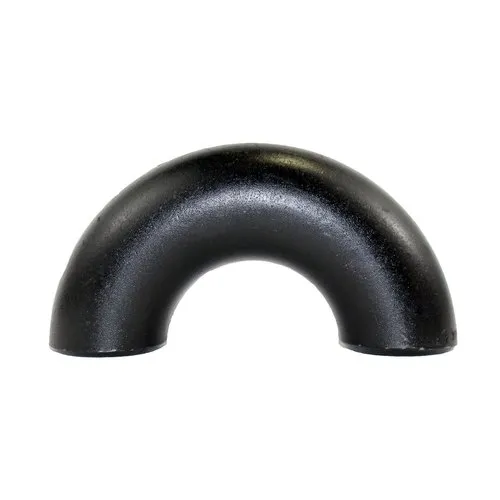-
Cangzhou Yulong Steel Co., Ltd.
-
Phone:
+86 13303177267 -
Email:
admin@ylsteelfittings.com
- English
- Arabic
- Italian
- Spanish
- Portuguese
- German
- kazakh
- Persian
- Greek
- French
- Russian
- Polish
- Thai
- Indonesian
- Vietnamese
- Zulu
- Korean
- Uzbek
- Hindi
- Serbian
- Malay
- Ukrainian
- Gujarati
- Haitian Creole
- hausa
- hawaiian
- Hebrew
- Miao
- Hungarian
- Icelandic
- igbo
- irish
- Japanese
- Javanese
- Kannada
- Khmer
- Rwandese
- Afrikaans
- Albanian
- Amharic
- Armenian
- Azerbaijani
- Basque
- Belarusian
- Bengali
- Bosnian
- Bulgarian
- Catalan
- Cebuano
- China
- China (Taiwan)
- Corsican
- Croatian
- Czech
- Danish
- Esperanto
- Estonian
- Finnish
- Frisian
- Galician
- Georgian
- Kurdish
- Kyrgyz
- Lao
- Latin
- Latvian
- Lithuanian
- Luxembourgish
- Macedonian
- Malgashi
- Malayalam
- Maltese
- Maori
- Marathi
- Mongolian
- Myanmar
- Nepali
- Norwegian
- Norwegian
- Occitan
- Pashto
- Dutch
- Punjabi
- Romanian
- Samoan
- Scottish Gaelic
- Sesotho
- Shona
- Sindhi
- Sinhala
- Slovak
- Slovenian
- Somali
- Sundanese
- Swahili
- Swedish
- Tagalog
- Tajik
- Tamil
- Tatar
- Telugu
- Turkish
- Turkmen
- Urdu
- Uighur
- Welsh
- Bantu
- Yiddish
- Yoruba

Dec . 12, 2024 18:46 Back to list
concentric weld reducer
Understanding Concentric Weld Reducers A Comprehensive Overview
In the world of piping and plumbing, various components play crucial roles in ensuring the efficiency and safety of fluid transport systems. One such essential component is the concentric weld reducer. This article delves into what concentric weld reducers are, their applications, manufacturing processes, and advantages, offering a thorough understanding of this vital piping fitting.
What is a Concentric Weld Reducer?
A concentric weld reducer is a type of pipe fitting used to connect two pipes of different diameters. Unlike eccentric reducers that have one side angled to allow for a flat bottom, concentric reducers have a symmetrical design. This means that both ends of the reducer are aligned at the center. The primary function of a concentric weld reducer is to change the diameter of a pipe while maintaining a consistent hydraulic flow. This is particularly important in systems where the movement of fluids must be smooth to avoid turbulence or flow disruptions.
Applications of Concentric Weld Reducers
Concentric weld reducers are widely used in numerous industries, including
1. Oil and Gas In the oil and gas industry, these reducers are crucial for the transportation of petroleum. They help in connecting different sizes of pipes without disrupting the flow. 2. Water Treatment In water treatment plants, concentric reducers are utilized to manage various flow rates and diameters within the piping system, ensuring efficient treatment of water. 3. Chemical Processing The chemical industry often uses concentric weld reducers in their pipelines to accommodate the transportation of chemicals, ensuring that there is no leakage or contamination as the fluid transitions between different pipe sizes. 4. HVAC Systems In heating, ventilation, and air conditioning (HVAC) systems, these reducers help manage air flow between ducts of varying sizes, optimizing the performance of the system.
Manufacturing Process
The manufacturing of concentric weld reducers requires precision and adherence to specific standards
. Typically, these reducers are made from various materials such as stainless steel, carbon steel, and alloy steels, depending on the application and the specific requirements of the system they are designed for.1. Material Selection The choice of material is critical, especially in terms of corrosion resistance and strength. Stainless steel is often preferred for its durability and ability to withstand harsh conditions.
2. Cutting The process begins with cutting the raw material into specific sizes that will be used to create the reducer.
concentric weld reducer

3. Shaping The cut pieces are then shaped using processes like forging or machining. This step is crucial for ensuring that the reducer meets the exact specifications.
4. Welding Once shaped, the ends of the reducer are welded using techniques such as TIG or MIG welding. This ensures a strong, leak-proof joint with the pipes to which they will be connected.
5. Quality Control After fabrication, each reducer undergoes rigorous testing to check for structural integrity, fittings accuracy, and corrosion resistance. This may include pressure testing and visual inspections.
Advantages of Concentric Weld Reducers
The use of concentric weld reducers in piping systems comes with several advantages
- Smooth Flow Transition The symmetrical design allows for a gradual change in diameter, promoting a smooth transition and reducing the risk of turbulent flow. - Robust Design Being welded rather than threaded, these reducers provide a stronger and more durable connection, which is essential in high-pressure applications.
- Versatility Available in various sizes and materials, concentric weld reducers can be used in a wide range of industries and applications.
- Reduced Risk of Leakage The welded joints provide a more reliable seal compared to other joint types, significantly reducing the risk of fluid leakage.
Conclusion
In summary, concentric weld reducers are indispensable components in the piping systems of various industries. Their ability to maintain smooth fluid flow while connecting different pipe sizes makes them a preferred choice for engineers and contractors. Understanding their applications, manufacturing processes, and advantages ensures that professionals can utilize these fittings effectively in their piping designs, contributing to the overall efficiency and safety of fluid transport systems. As industries continue to evolve, the role of concentric weld reducers will undoubtedly remain significant in ensuring the reliability of infrastructure.
Latest news
-
ANSI 150P SS304 SO FLANGE
NewsFeb.14,2025
-
ASTM A333GR6 STEEL PIPE
NewsJan.20,2025
-
ANSI B16.5 WELDING NECK FLANGE
NewsJan.15,2026
-
ANSI B16.5 SLIP-ON FLANGE
NewsApr.19,2024
-
SABS 1123 FLANGE
NewsJan.15,2025
-
DIN86044 PLATE FLANGE
NewsApr.19,2024
-
DIN2527 BLIND FLANGE
NewsApr.12,2024
-
JIS B2311 Butt-Welding Fittings LR/SR 45°/90° /180°Seamless/Weld
NewsApr.23,2024











